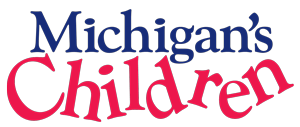Goal Setting=Good; Investing Toward Goals Starting Now=Better
May 26, 2015 – Last week the new State Superintendent-elect and the Education Trust Midwest announced new educational goal-setting priorities in Michigan. The purpose of these new state efforts is to improve educational outcomes that in recent years have moved further and further away from the most successful states. The new educational goal-setting priorities aim to put Michigan back on a trajectory that will lead to more success for our kids, schools and communities.
Statewide goals for improving education? Great, let’s give that another try. There have been many state and federal goals for improving educational outcomes over the years – most recently, those goals have come with both carrots and sticks for the schools and communities who serve those lowest performing students. The Ed Trust’s Michigan Achieves initiative suggests that we continue some current efforts that have shown success, and that we also take a closer look at the efforts of states who have better outcomes than we do. And the new Superintendent publicly agrees.
A great step, right? You set a goal for improvement, and then you shift your program investments to be able to meet that goal. Michigan’s Children is all in. As I’ve certainly said too many times to count, we absolutely know what it takes to improve educational and other life outcomes for children, youth and families. We have decades of research, we have innovative and effective practice from other states and from within our own. What we have not had is appropriate investment in what works to improve equity in these outcomes.
Relatedly, members of Congress introduced a bill that would require the U.S. to set goals for reducing child poverty – similar to what took place in the U.K. over the past several years with impressive results. The impact of economic insecurity on the well-being of children, youth and families can not be overstated. Research has shown that poverty (particularly extreme poverty and living in poverty for many years) is tied with nearly every negative outcome. Everyone from all ends of the political spectrum recognizes this. Some members of Congress are suggesting that instead of wringing our hands and continuing to pay for the consequences of those outcomes, we set a goal and move to change the situation.
What really struck me here was the intimate connection between these two goals – the clearest path to better economic security is educational success, so we won’t reach the poverty goal without focusing on the education goal. In addition, we are unlikely to move the needle on educational goals without tackling challenges that families face outside of the school building, day and year as well.
Let’s start now, in the current budget conversation. There are stark differences in state budget proposals that will be decided on by small numbers of legislators over the next few weeks. Three that we’ve pulled out that will take us closer to both goals:
- Investment in 3rd grade reading. The Senate included additional investments in 3rd grade reading success. Particularly important for equity is the Senate recommendation for $10 million to expand learning opportunities for the most challenged kids. This isn’t enough (we’ll be going for at least $50 million moving forward), but it is certainly a start.
- Investments in the most challenged kids, schools and communities. The Senate included an additional $100 million to fund programs specifically for learners with identified barriers. The House didn’t include this increase.
- Investments in family literacy. We will not reach either poverty or education goals if we don’t make sure that every parent can assist every child as their first and best teacher. With 34,000 young adults in Michigan (ages 18-34) without even a 9th grade education we need more investment. The Senate included an increase in the adult education program, while the House eliminated it all together.
Let’s keep talking. Moving beyond the current budget year, our Legislature and Congressional Delegation need to prioritize many supports for the most challenged, including: services that prevent later problems like child abuse and neglect prevention, home visiting support and Early On; services that improve outcomes for young people in the state’s care through the Foster Care and Juvenile Justice systems and their families; and services that best support college and career success like early learning, expanded learning, family literacy and integrated student services.
Let’s talk about setting goals and let’s keep working to meet them.
— Michele Corey
